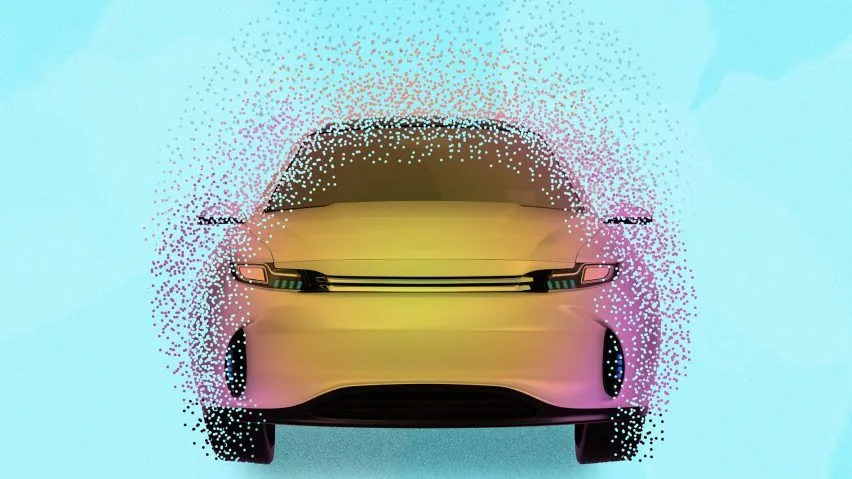Original article extracted from The CityFix.
Joel Jaeger is a Senior Research Associate for WRI’s Systems Change Lab and Climate Program.
Electric vehicle sales have been growing exponentially due to falling costs, improving technology and government support. Globally, 10% of passenger vehicles sold in 2022 were all-electric, according to analysis of data from the International Energy Agency. That’s 10 times more than it was just five years earlier.
Electric Vehicles (EVs) produce fewer greenhouse gas emissions than internal combustion engine vehicles, such as gasoline- and diesel-powered vehicles. Once the electric grid shifts to zero-carbon power, emissions will be even lower. For this reason, ramping up EVs will be one of the most important steps in reducing transportation emissions — alongside reducing private vehicle travel and shifting to public transit, biking or walking.
There are already a number of countries switching to EVs at impressive rates. The top five countries with the highest share of EV sales are Norway (all-electric vehicles made up 80% of passenger vehicle sales in 2022), Iceland (41%), Sweden (32%), the Netherlands (24%) and China (22%), according to our analysis. China’s place on this list is especially significant considering it is the biggest car market in the world. The other two biggest car markets have lower EV sales but are growing quickly: the European Union (12%) and the United States (6%).

Globally, EVs need to grow to 75% to 95% of passenger vehicle sales by 2030 to be consistent with international climate goals that limit global warming to 1.5 degrees C (2.7 degrees F) and prevent many harmful impacts from climate change, according to a high-ambition scenario from Climate Action Tracker. This target is within reach given recent exponential growth in EV sales. The average annual growth rate was 65% over the past five years; over the next eight years the world needs an average annual growth rate of only 31%.
National EV Sales Follow a Pattern of Exponential Growth


For example, India’s EV sales grew from 0.4% to 1.5% in just one year from 2021 to 2022. That’s about three times faster than the global average, which took three years to grow from 0.4% EV sales in 2015 to 1.6% in 2018. Israel jumped from 0.6% EV sales to 8.2% in just two years, from 2020 to 2022. It took the world more than five years to achieve that much growth, from 0.5% in 2016 to 6.2% in 2021.
So far most of the EV leaders have been high-income countries, like in Scandinavia, or countries with a lot of market power, like China. Strong government policy and financial incentives from these countries paved the way for a dynamic EV industry to rise and helped costs to fall. Now as the economics of EVs become more favorable, other countries at lower income levels or in different national situations may be able to follow in the same footsteps or go even faster.

How the Largest Car Markets can Drive Industry Change
Helping the world transition to EVs largely relies on the performance of the three biggest car markets — China, Europe and the United States — which are collectively responsible for 60% of all global car sales. All three markets have seen big upticks in EV sales in the past few years. China’s EV sales share is currently double the global average. Europe’s EV sales share is slightly above the global average. The United States’ EV sales share is about one year behind the global average (in 2022 the U.S. was at 6.2% EV sales, which is exactly what the world was at in 2021). Sales in the U.S. are poised to grow quickly after the Inflation Reduction Act spurred $62 billion in EV investments during its first year.
Sales are still low in India and Japan, the fourth- and fifth-biggest car markets respectively. However, they are finally beginning to accelerate, and as recent sales data has shown, late-adopting countries often grow faster than the early adopters.
Two Countries Achieving EV Success
Let’s dive deeper into Norway and China, two of the countries that have been most successful in scaling up EVs, to learn from their experiences.
1) Norway Is the Only Country Where the Majority of Car Sales are All-Electric
Norway is one of the coldest regions in the world and is crisscrossed by fjords that make some areas difficult to access. Given concerns that EV batteries don’t run effectively in low temperatures and don’t have as long a range as gasoline vehicles, one would expect that Norway would be one of the last regions to adopt EVs. To the contrary, Norway and its Scandinavian neighbors such as Iceland and Sweden are far and away the leaders in EV adoption. Eight out of 10 passenger car sales in Norway were all-electric vehicles in 2022, with 150,000 sold in total.
Norway is so far ahead of the pack because the government has deliberately and consistently promoted EVs, starting those efforts in 1990, long before the rest of the world. It has a target to phase out internal combustion engine vehicle sales by 2025, the earliest of any country.


There are three reasons why Norway’s efforts to make EVs the default option for new car buyers have been successful:
First, government incentives have made EVs the best financial choice for consumers. Norwegians who buy all-electric vehicles do not have to pay high value-added taxes or registration taxes and receive other financial benefits as well. This eliminates a substantial portion of the cost of buying and owning an EV. These incentives were gradually rolled out in the 1990s and early 2000s, with support from multiple governments and all political parties. The government was originally trying to support a Norwegian EV brand called TH!NK. The company wasn’t successful and most Norwegian cars are imported from abroad, but the government continued to promote EVs due to the environmental benefits.
Even with generous incentives, EVs didn’t take off until the technology had advanced. The real turning point was around 2012, when the total cost of owning an EV over its lifetime (including the costs of purchasing, maintaining and charging the vehicle) became cheaper than the total cost of owning a traditional gas- or diesel-powered vehicle, when including all the tax breaks. By 2021, EVs were also on average 5,000 euros cheaper to purchase when including all the tax breaks.
Second, the government has invested heavily in EV chargers and as a result Norway has the most public fast chargers per capita of any country in the world. These can get an EV battery from zero to 80% in as little as 20 minutes. In addition, Norway has established a right to charge for people living in apartment buildings and provides grants for housing associations to install their own chargers.
Third, Norway has also provided EV owners with some attractive perks, such as free parking in cities, exemptions or reductions in road tolls, access to priority bus lanes and reduced rates for EVs to be transported by ferry (ferries are frequently used given Norway’s fjord-covered landscape).
Given the success of its EV policies, the government has started gradually rolling back EV incentives for luxury cars and some of the other perks for all EVs. Now that everyone in Norway is buying EVs, it no longer makes sense to allow all cars to have bus lane access and free parking. Plus, some of these policies may encourage people to choose car travel over public transit, which would increase emissions, so Norway is now more consciously considering how to promote other transport options besides private cars.
2) China Sold More EVs Last Year Than the Rest of the World Combined
China is by far the biggest player when it comes to EVs. In 2022, 22% of passenger vehicles sold in China were all-electric, which adds up to 4.4 million sales. That’s higher than the 3 million EVs sold in the rest of the world combined. China’s support for EVs has helped drive down battery costs and make EV adoption easier all over the world.
China, which was far behind other countries in the production of internal combustion engine vehicles, saw EVs as a strategic investment in a new area of automobile manufacturing where it could develop an edge if it started early enough. It was also interested in the role EVs could play in reducing air pollution and dependence on imported oil.

In 2009 and 2010, China first rolled out financial subsidies and tax breaks for both EV producers and consumers, starting with pilot cities around the country. Cities could customize the amount and type of EV subsidies to fit their needs and worked with local EV companies to help them grow. For example, Chinese EV company BYD started out with close ties to the city of Shenzhen and has since grown to be one of the biggest EV producers in the world. After the pilot cities programs, China continued to spend billions of dollars on various national and local subsidies and tax breaks. In 2018, China began a transition to a market-based zero-emissions vehicle credit system, adapted from California’s zero-emissions vehicle mandate, to replace direct subsidies. The transition has been gradual, and some of the EV subsidies and tax breaks have been extended past their planned expiration date.
Overall, the industrial promotion policies have been effective. Today, eight out of the top 10 EV models sold in China are made by Chinese companies, and China has begun to export EVs globally. Chinese consumers can choose from nearly 300 EV models, more than anywhere else. Chinese companies have also done more than any other country to develop affordable EV models. In many other countries the focus has been on larger vehicles which require more expensive batteries, but in China, smaller vehicles are the norm. BYD recently launched an $11,000 EV hatchback, and the $4,500 Wuling Hongguang Mini EV has been one of the top sellers.
The retail price of many electric cars in China has fallen below that of comparable gas or diesel-powered vehicles, when including subsidies. And Tesla’s entry into the Chinese market has spurred a price war that is pushing down EV costs further.
Another major factor that has encouraged uptake is that China has installed 760,000 public fast charging points and 1 million public slow charging points, which is more than the rest of the world combined. And like Norway, China has extended non-monetary benefits to EV drivers, mostly at the city level. For example, in the city of Beijing, car license plates are rationed and have a long wait time, but the process is essentially waived for EV buyers.

Government Leadership is Key for Faster EV Uptake
The experiences from Norway and China can provide lessons for other countries. Both countries had governments that made a deliberate choice to promote EVs, invested in public chargers and implemented policies to make EVs cost competitive. EV adoption grew rapidly once EVs were a better financial decision for prospective car buyers than traditional gas- or diesel-powered vehicles, especially when buyers were confident in the range of the vehicles and their ability to easily access public chargers.
Thanks to the policy pushes in countries like Norway and China, it won’t take long for cost competitiveness to arrive for more countries, given the falling EV prices, but those governments should not sit back and wait for this to happen given the urgency of the climate crisis. Not every country is as wealthy as Norway or has the market power and government structure of China, but EVs can be an economic and environmental win for a wide variety of developing countries.
So far, cost competitiveness has mostly been achieved through subsidies, but these can be quite expensive for government budgets and there are other options too. Policies mandating 100% EV sales are the single most effective policy to drive the transition. Currently, 16 countries, including Canada, Japan and the United Kingdom, have some form of policy mandating 100% EV sales in 2035 or earlier. More countries should create and enforce such policies. If the EU, U.S. and China all aligned their national regulation to aim for 100% EV sales by 2035, the scaling up of production would lower costs worldwide, bringing forward cost parity in other countries, such as India, by as much as three years. In addition, countries should increase the number of public chargers, and particularly the number of fast public chargers, in order to make EV ownership an easy choice.
The shift to EVs must be done equitably. Governments should incentivize carmakers to produce more affordable EV models. When subsidies are used, they should be targeted at low-income households, which in addition to being equitable is also more effective at increasing EV adoption, given that low-income households are more sensitive to price changes.
Rapidly increasing EV adoption to reach 75% to 95% of global passenger vehicle sales by 2030 will be challenging, but it is achievable if the world heeds these lessons and keeps up the current rapid pace of change.
Finally, it’s important to note that increasing EV sales is only part of the story. To decarbonize road transportation, old gas- and diesel-powered vehicles will need to be retired rather than be sold to other drivers or to developing countries and the increasing popularity of large vehicles like SUVs will have to be reversed. What’s more, the goal shouldn’t be for everyone to own a car. Transforming the transport system to increase access to other forms of mobility can lower emissions, reduce automobile-related deaths, save time lost in traffic and limit ecosystem damages.
Data for all-electric vehicle sales in this article is from the International Energy Agency’s Global EV Data Explorer, as of September 2023. Data is presented for both all-electric vehicles and plug-in hybrid; author split out the all-electric vehicles.
This article is the second in a series of deep-dive analyses from Systems Change Lab examining countries that are leaders in transformational change. Systems Change Lab is a collaborative initiative — which includes an open-sourced data platform — designed to spur action at the pace and scale needed to limit global warming to 1.5 degrees Celsius, halt biodiversity loss and build a just and equitable economy.
Asurza Engineers Ltd. – www.asurza.ca – Ontario, Canada.





